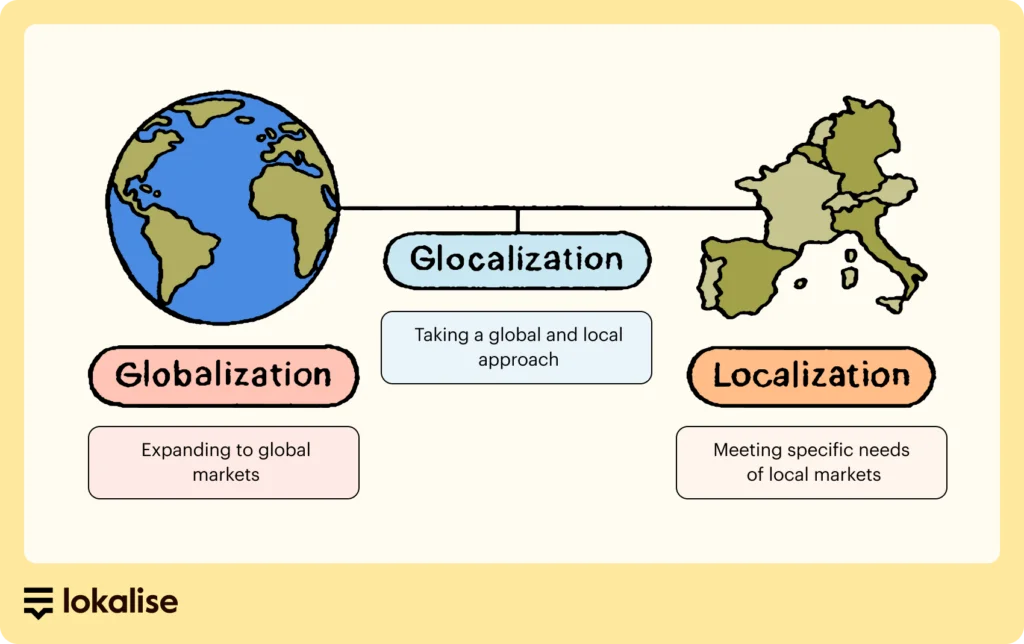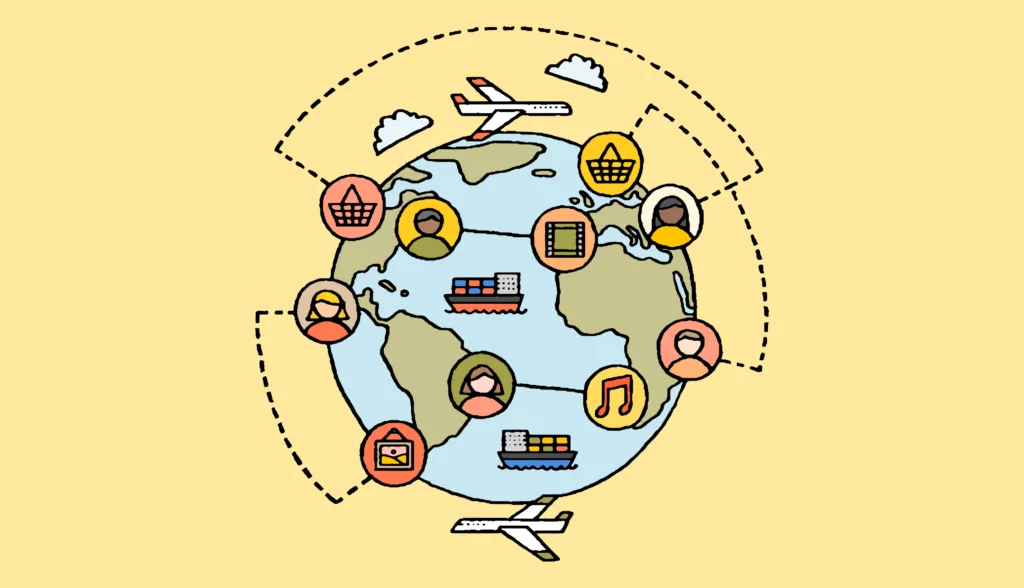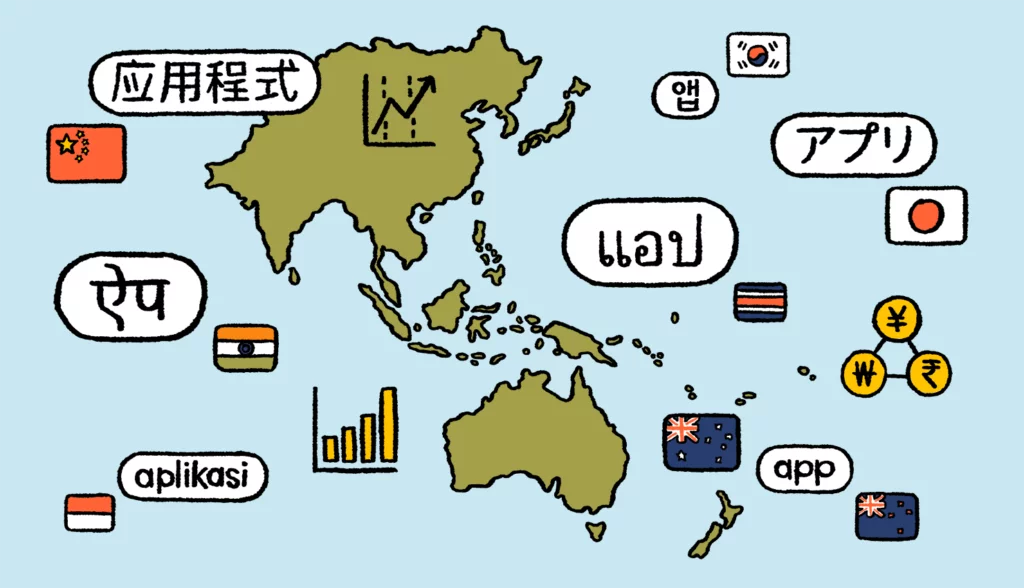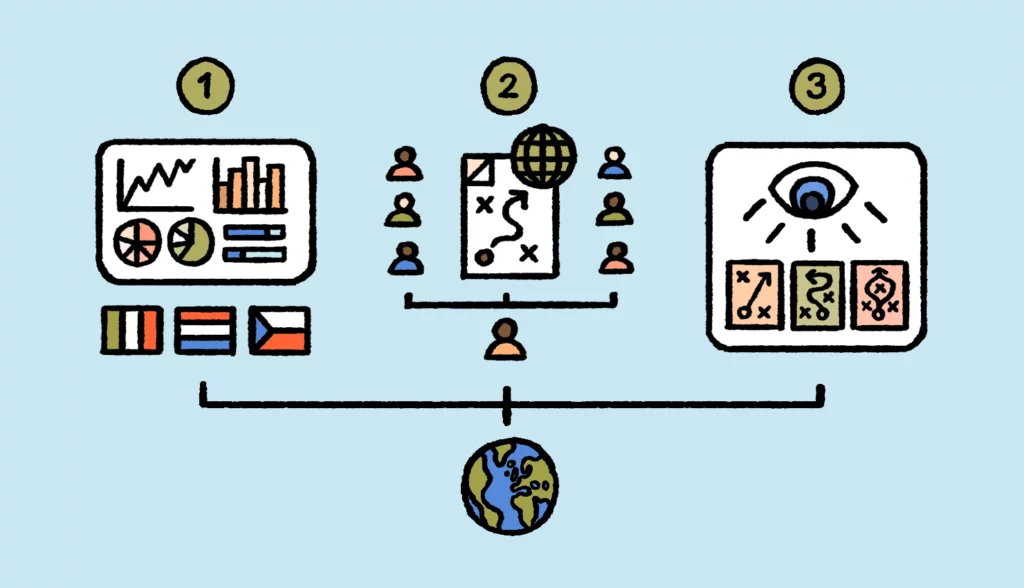Global trade in online services and goods is booming, despite globalization being under fire in many nations.
Brexit, COVID-19, Trump’s trade war with China, and the war in Ukraine, have left many wondering if we’re entering a phase of deglobalization – a world destined to become less connected, with countries looking inwards instead of outwards.
Some welcome this movement, citing vulnerabilities of global supply chains exposed during the pandemic and the Russia-Ukraine conflict. Others believe the positive outcomes of globalization far outweigh the negatives. And those on the bench believe globalization should be redefined.
To help you understand why there’s so much debate over globalization, we’ll go over both the positives and negatives later on in this article. First, let’s go over the definition of globalization.
What is globalization?
Globalization describes how the world’s cultures and economies are connected and dependent on each other. Through trade agreements between countries, globalization allows businesses to buy and sell across borders with lower tariffs and no or fewer limits on imports and exports. Overall, the goal of governments in favor of globalization is to make it easier to do business worldwide.
Did you know? The opposite of globalization is protectionism, which restricts international trade and forces companies and consumers to buy home-grown goods and services. This shift can significantly impact international pricing strategies, as companies must adapt to trade barriers, tariffs, and local market conditions.
Fun fact about glocalization
Nope, not a typo! Glocalization should not be mistaken for globalization. It’s a combination of globalization and localization. While globalization is the process of expanding business operations on a worldwide scale, localization is the process of adapting products, services, and marketing to meet the specific needs of local markets.
When you merge the two, you get glocalization. The concept represents a global and local approach with companies maintaining a global brand identity that’s more universally accepted, while also adapting products or services to suit local markets.
The localization process is essential in this blend, as it enables businesses to effectively tailor their offerings, ensuring they resonate with local consumers while preserving their overarching global strategy.

What are the advantages of globalization?
International trade is a key driver of globalization, and so we often focus on the trade benefits of globalization. But globalization also brings with it social, political, legal, and cultural benefits. If you’re considering international expansion, it’s important to take a closer look at these issues.
Expansion into other markets
Great ideas and products are no longer confined to local markets. Through strategic market expansion, businesses can enter new regions and offer their products and services to a larger audience. They can also set up operations in areas where production and employment costs are lower, helping them reduce expenses and remain competitive.
Further reading: Learn more about business translation, why it matters, and how to handle it properly.
Globalization not only benefits companies, but also customers who have access to a larger variety of products, leading to more choices, better quality (because companies need to compete), and more affordable products.
The language gap gets smaller
With more and more companies going global, the language gap is getting smaller. As part of their global marketing strategy, businesses are communicating with customers in their native language to better connect with them and create fairer, more personal experiences.
Twenty years ago, there was no way of knowing which brand was doing the best job at going global from a website perspective, as global researcher John Yunker, explains it. Communicating in other languages wasn’t something that everyone was doing back then, and so there was no blueprint to follow. This is why John created the Web Globalization Report Card (below) to measure who was doing the best job at going global.
The Web Globalization Report Card scores global websites based on:
- Internationalization (i18n) – the flexibility of global website architecture
- Localization – the level that content has been adapted for local audiences
- Global navigation – can the user find their locale or localized site?
- Global reach – how many languages are available?

During John’s research, Google emerged as the best global website. It was the most multilingual website on the internet with 67 languages, and has become a benchmark for the rest of the world.
In 2024, the two most linguistically fluent websites on the internet are not-for-profit organizations: The Jehovah’s Witnesses (over 1000 languages!) and Wikipedia (339 languages).
Going global? Learn how to successfully translate your website
Access to a diverse pool of talent
More and more companies operate remotely and hire globally. The big benefit is that they can tap into a vast pool of talent, bringing diverse perspectives and skills to the table. Some countries are making it even easier for so-called digital nomads to work remotely by offering temporary visas, which is reshaping local economies and becoming yet another symbol of globalization.
Transfer of technology and knowledge-sharing
Opening up borders can lead to greater innovation, breakthroughs, and growth. Though most of us want to leave COVID-19 well behind us, we need only look at the response from countries who came together to create the first vaccines in less than a year. Vaccines normally take around 5 to 10 years to create, but the deadliness, rapid spread, and disruptiveness of COVID-19 led to a new global approach to vaccine development, manufacturing, and distribution.
Access to new cultures
Globalization has made it easier to explore, learn, and be inspired by new cultures. Without the freedom to work abroad, travel across borders, and do business internationally, we wouldn’t be exposed to new ideas, products, and services. Our choices would be limited to what’s available in the countries we live in. Imagine not having access to music, food, and movies from other parts of the world!
What are the disadvantages of globalization?
Globalization doesn’t have all the answers. Where the scales tip in favor of economic growth and technological advancements, they weigh heavily with concerns over economic inequality and environmental issues. Let’s go over some of these downsides in more detail.
Cultural homogenization
Dominant cultures from other countries often influence local culture, leading to a more uniform global culture. This raises concerns about losing unique local identities, traditions, brands, languages, and cultures as locals adapt to global markets. A thoughtful market entry strategy can help businesses navigate this balance—respecting local culture while establishing a presence in new regions.
Financial crises and inequality
While globalization has been shown to decrease poverty overall, it’s often at the expense of local businesses and populations. Lower-priced foreign competition has led to job losses in developed nations, especially in domestic manufacturing, and exploitative labor practices in the developing world.
Globalization can also widen the inequality gap, with the rich becoming richer and the poor becoming poorer. Let’s take the modern-day example of globalization as an example: digital nomadism. This phenomenon has been blamed for rising house prices in some countries. Digital nomads are drawn to countries where living costs are low, allowing them to afford better lifestyles and save more. But this in turn sees prices in the region soar, and prices locals out of property, food, and more.
Environmental toll
Environmental degradation is common in countries where regulations are more relaxed. Projects like the construction of hydropower dams and deforestation in the name of globalization have caused environmental harm and habitat destruction. Meanwhile, global integration has led to a decrease in biodiversity and the spread of invasive species, impacting agriculture, wildlife, and ecosystems worldwide.
Supply chain vulnerabilities
Stretched supply chains make the world more susceptible to disruptions. Highlighted by the pandemic, US and China trade disputes, and more recently Russia’s war against Ukraine. The latter caused global disruptions to natural gas supplies and saw a spike in energy prices, while the ongoing spat between China and the US continues to see sanctions on exports and imports from both sides, which is disrupting global supply chains for companies.
Disruptions are not just man-made, however. Natural disasters can also be huge disruptors. Taiwan, for example, the largest manufacturer of semiconductors for large tech firms like Apple, is prone to typhoons and earthquakes.
Examples of globalization
Now that you understand the positives and negatives of globalization, let’s take a look at some examples of how globalization can show up in many different ways.
Brand and product globalization
Brands that sell their products and services in multiple countries often influence cultures and even economies on a global scale. Companies like, Coca-Cola, Nike, and McDonald’s have become ubiquitous symbols of American culture worldwide. Car companies, like Toyota – the world’s largest motor vehicle manufacturer – creates jobs and spur technological growth. Barbie, the most iconic toy doll, has influenced popular culture around the world. She’s inspired fashion, beauty standards, career choices, and trends.
These are examples of globalized brands that have universal appeal. Their brand, messaging, and products need to be consistent across markets and localized to make sure they resonate with consumers in individual markets.
Fun fact: you won’t find a McDonald’s in Iceland, where locals boycotted the hamburger chain in favor of their local burger joint.
Website globalization
As the number of brands going global continues to rise, we’ll continue to see an increase in website globalization – websites that are designed for a wider spectrum of markets. The average number of languages supported by global brands in 2024 is 34. But there’s still a language gap.
The Website Globalization Report Card revealed that to communicate with over 90% of internet users, websites will need to support 50 or more languages. To make it easier to adapt websites for different markets, developers will need to internationalize their product’s code base.
Think of internationalization as the groundwork for the globalization of digital products. In the context of globalization vs internationalization, internationalization involves preparing your website so it’s global-ready, while globalization is the broader process of adapting it for multiple markets.
Cultural globalization
The economic interdependence of countries leads to cultural exports and exchange. Hollywood movies are a classic example, of bringing American culture to international audiences. Another more recent example is K-pop, a music genre popular in South Korea in the 90s, which has become a global cultural phenomenon.
Digital globalization
The internet is arguably the most significant technological example of digital globalization. That includes digital content and platforms, like websites, apps, and social media. It allows for real-time communication and access to information, regardless of geographical location.
Platforms like Facebook and Twitter have created virtual communities, where people from across the globe can connect, share, and unite people to support causes and movements. It brings people together more than ever and breaks down barriers of communication.
The future of globalization: finding the right balance
Right now, many people are on the fence about globalization.
The good news is that nations and corporations are reexamining their transnational strategy rather than reversing or ramping up their efforts. They’re finding new ways to adapt to the changing geopolitical landscape, including:
- Diversifying their manufacturing bases – a strategic move to strengthen supply chains. Some companies are even turning to locally sourced and manufactured solutions to help reduce environmental impact and support local economies.
- There’s talk about a Global Currency Reset, a theory investigating a new global currency
- Shifting from manufacturing to services, which play an increasingly important role in globalization
- Looking at sustainable supply chains with the need and demand for greener alternatives.
It seems more likely that globalization will evolve than reverse. By 2030, China and India are predicted to overtake the US as the world’s biggest economy, which will see a significant shift in the global economic landscape.
One thing is certain: recent and ongoing debates around globalization have highlighted how important it is to find the right balance of globalization for different regions.






